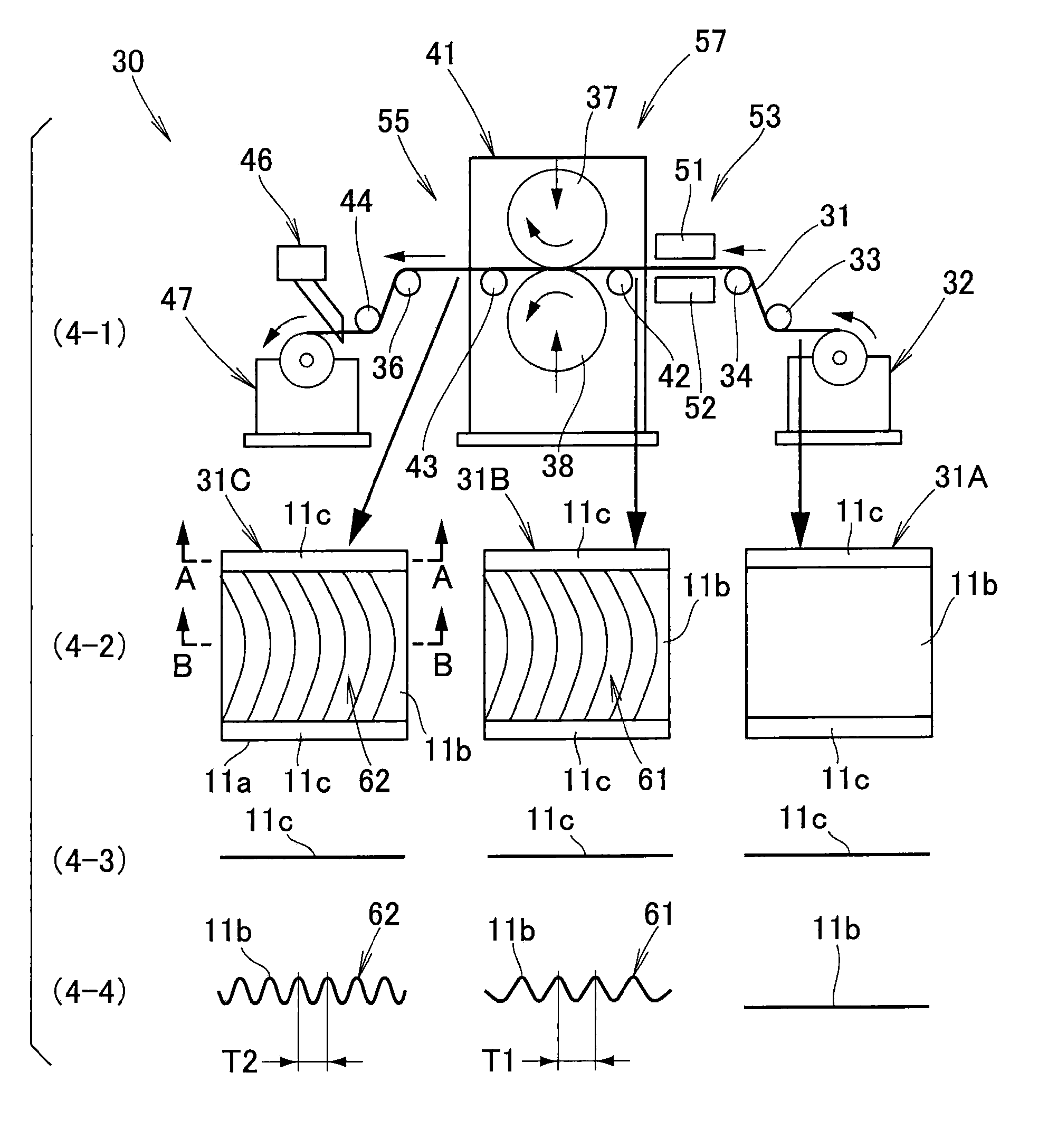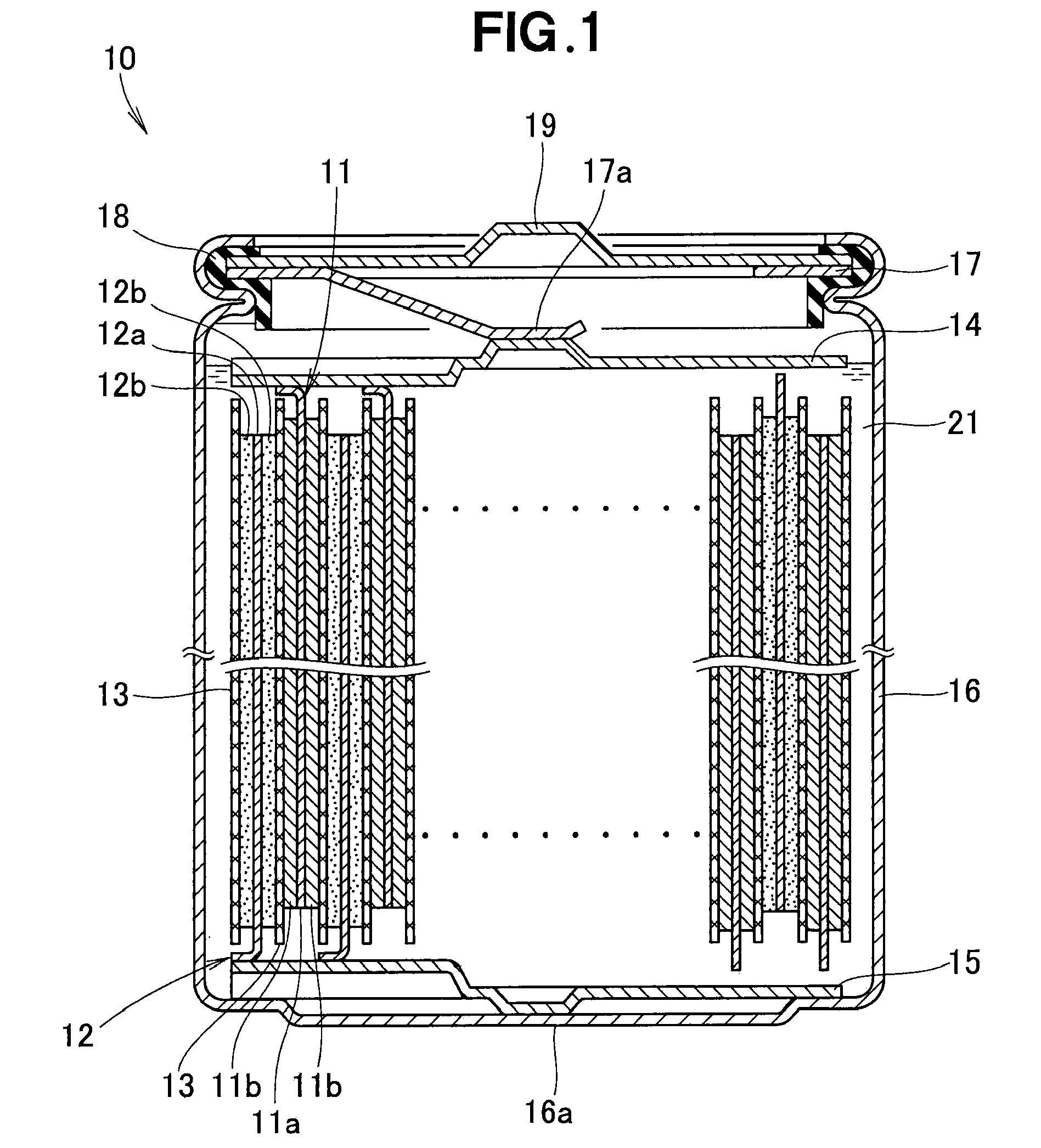Battery manufacturing method and apparatus
a battery manufacturing method and battery technology, applied in the direction of cell components, final product manufacturing, sustainable manufacturing/processing, etc., can solve the problems of reducing processing accuracy and difficulty in accurately positioning the electrode sheet, so as to minimize the lowering of the processing accuracy of the electrode sheet and minimize the undesired thickness change of the electrode sheet
- Summary
- Abstract
- Description
- Claims
- Application Information
AI Technical Summary
Benefits of technology
Problems solved by technology
Method used
Image
Examples
Embodiment Construction
[0033]Reference is now made to FIG. 1 showing in section a battery manufactured in accordance with the present invention. The battery 10 includes: positive and negative sheet electrodes 11 and 12 each having its opposite surfaces coated with an electrode active material; separators 13 disposed between the positive and negative sheet electrodes 11 and 12 etc.; a current collector 14 held in contact with an upper end portion (i.e., non-active-material-coated portion) of the positive sheet electrode 11; a current collector 15 held in contact with a lower end portion (i.e., non-active-material-coated portion) of the negative sheet electrode 12; a conductive case 16 having accommodated therein the positive and negative sheet electrodes 11 and 12, separators 13 and disk-shaped current collector 14 and 15; a conductive plate 17 pressing the positive and negative sheet electrodes 11 and 12, separators 13 and current collector 14 and 15 against the bottom of the case 16; a lid 19 swaged, via...
PUM
| Property | Measurement | Unit |
|---|---|---|
| tension | aaaaa | aaaaa |
| elongation | aaaaa | aaaaa |
| thickness | aaaaa | aaaaa |
Abstract
Description
Claims
Application Information
 Login to View More
Login to View More - R&D
- Intellectual Property
- Life Sciences
- Materials
- Tech Scout
- Unparalleled Data Quality
- Higher Quality Content
- 60% Fewer Hallucinations
Browse by: Latest US Patents, China's latest patents, Technical Efficacy Thesaurus, Application Domain, Technology Topic, Popular Technical Reports.
© 2025 PatSnap. All rights reserved.Legal|Privacy policy|Modern Slavery Act Transparency Statement|Sitemap|About US| Contact US: help@patsnap.com



